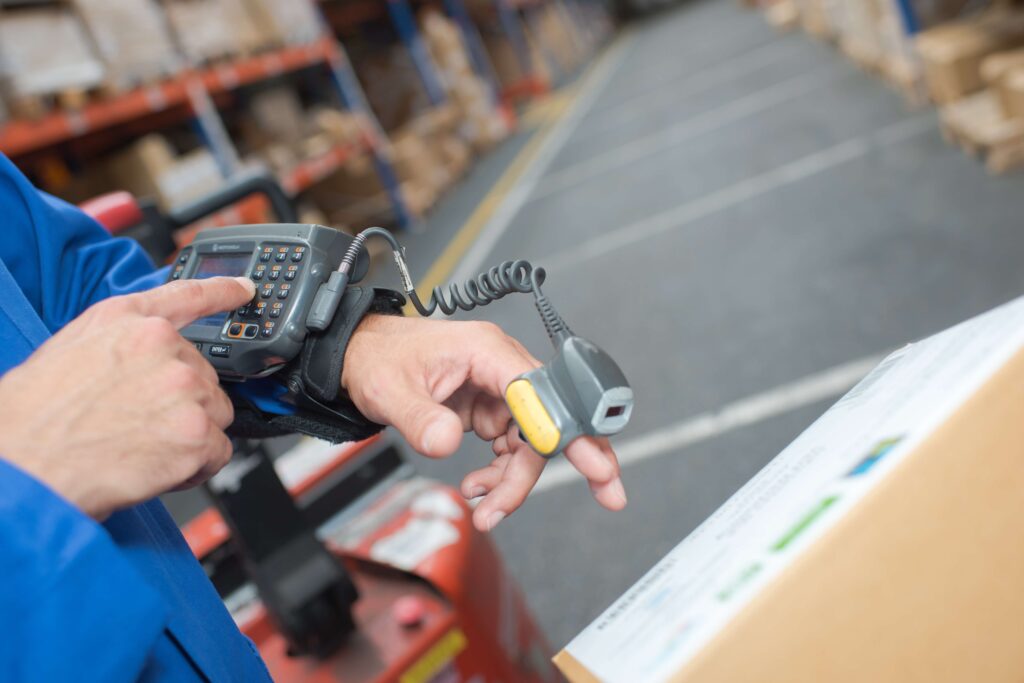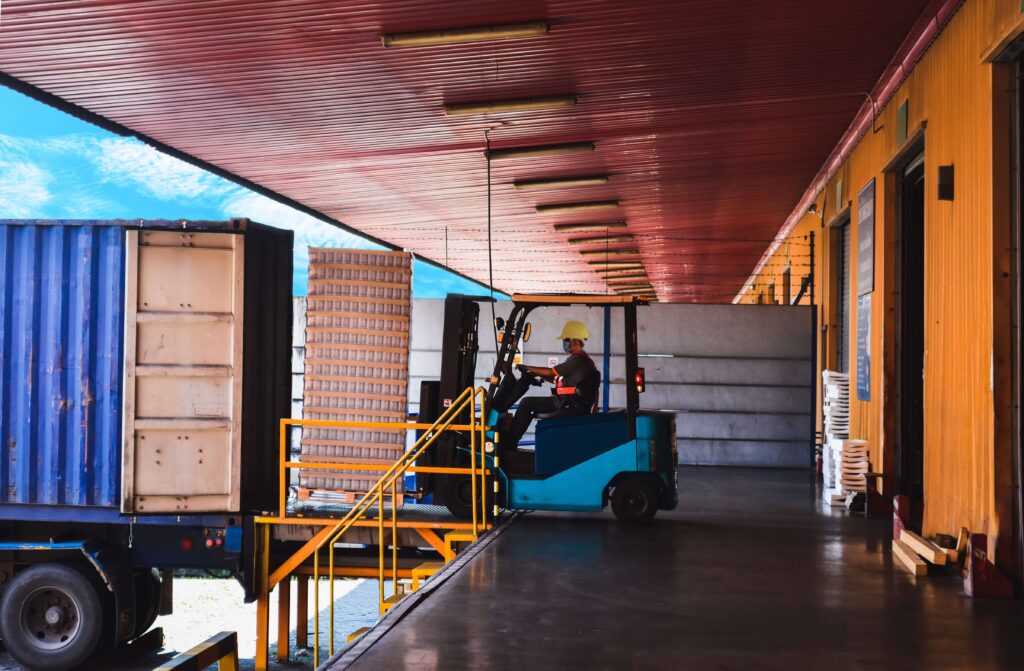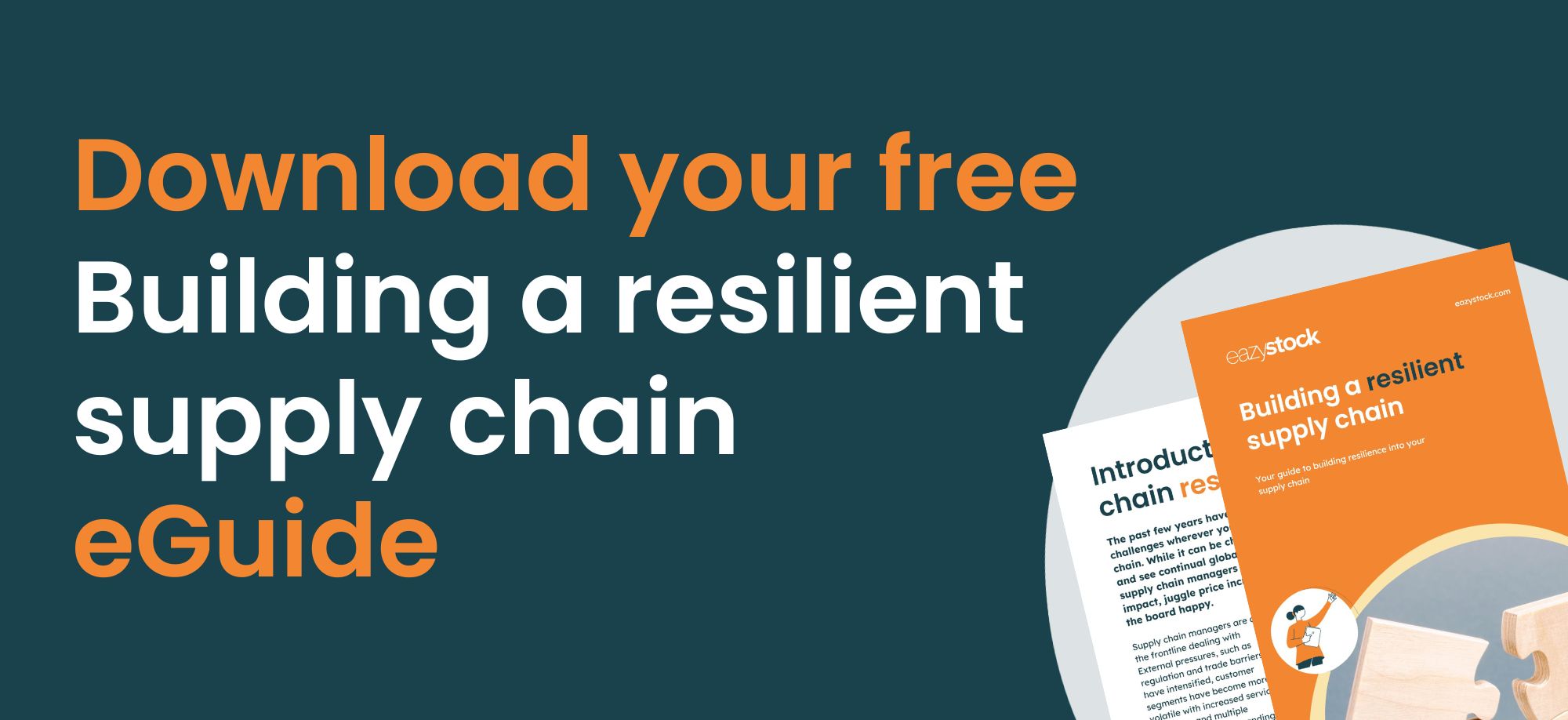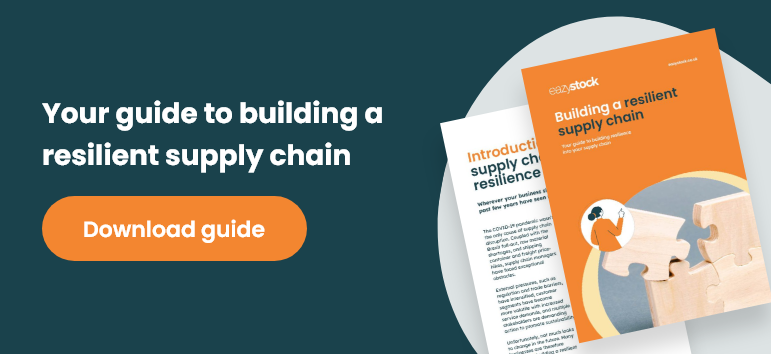Five steps to building a resilient supply chain
In the face of unprecedented global events that have posed significant challenges to businesses across the supply chain, the importance of supply chain resilience has never been more evident. Despite the constant disruptions, supply chain managers have the power to mitigate these impacts while maintaining customer satisfaction and board approval.
Supply chain managers are on the frontline of dealing with these external pressures, which have intensified in recent years. These pressures range from regulatory changes to volatile customer demands and stakeholder sustainability expectations.
Unstable global markets have brought price fluctuation and varying inflation levels. As the global economy is shaken, it can be easy to get caught up in the depressing details. However, they are out of our control. By focusing on the things you can control as a supply chain manager, you can be the hero your business needs.
Managing your inventory and supply chain management processes to build resilience can ensure continued competitiveness and profitability when times are tough.

What is supply chain resilience?
Supply chain resilience is a strategic form of risk management that involves improving supply chains with systems and processes to adapt to disruption. These systems should provide early warnings to allow the implementation of contingency plans to adapt to disruption and find ways to absorb the additional stress to minimise the impact. It might be possible to avoid disruption altogether.
What causes supply chain disruption?
Understanding the strength of the supply chain at each stage is vital to supply chain success due to how interdependent each stage is on the others. A problem at one point in the chain could compromise the entire global network. Unfortunately, supply chains are facing relentless disruption due to various factors, including:
- Global health events like the coronavirus pandemic.
- Geopolitical events like the Russian invasion of Ukraine and the war in the Middle East.
- Legislation and regulations, such as Germany’s Supply Chain Due Diligence Act 2023 and the EU’s Carbon Border Adjustment Mechanism (CBAM) restrictions.
- Cyberattacks, including injecting malicious code, data breaches and ransomware attacks.
- Natural disasters and climate events like flooding, earthquakes or weather damage to production facilities and transport routes.
Why should you build resilience into your supply chain?
Supply chain disruption is unpredictable, and companies that aren’t prepared, flexible, or agile will feel the most impact. A small supplier portfolio, minimal supply chain visibility, and dependence on manual, paper-based systems will make it hard to spot issues and respond to them.
As global supply chains involve many stakeholders and elements, effective supply chain planning is essential to reduce risk and the impact of disruption. Building resilience into the supply chain enables companies to proactively adapt and adjust to recover faster with a healthy bottom line.
How to build a resilient supply chain
Before building a resilient supply chain, you need to understand its weaknesses and highlight areas for improvement. A good place to start is to look at how you have responded to previous supply chain issues. These questions can help:
- Where did disruption hit your company?
- What was your initial response?
- Did it work? If not, what did you do?
- If yes, did you make permanent changes?
- Is your supply chain adequate to meet current demands?
- Where are the most significant risks?
Once you understand your company’s supply chain weaknesses and consequential issues, you can begin to plan how to prevent problems from happening in the future.
Five ways to build a resilient supply chain
1. Get the inventory management basics right
Accurate demand forecasting
Inaccurate forecasts can result in excess stock that won’t sell or stockouts that lead to lost sales. Accurate demand forecasts optimise stock levels, improve supplier relationships, prevent lost revenue, and improve customer satisfaction. By having reliable demand forecasts, you can also predict and mitigate the impact of supply and demand volatility. For example, you can understand the potential impact of a stock shortage if a container is delayed or lead times are extended.

Stock classification
Each product will have a different value to your business. Classifying them based on their sales value or consumption will help you adapt inventory management processes to prioritise items and ensure you carry more of the stock you need and less of the stock you don’t. This also allows you to prioritise your work, ensuring that when inevitable disruption occurs to your supply chain, you can get to work on those products that are most important to you and your customers quickly.
Stock-out anticipation
Whether manual or automated, risk of run-out reports provide information on current stock levels, incoming items, demand forecasts, and lead times to prevent stock shortages.
Tracking excess stock to prevent dead stock
Understanding the health of your inventory by tracking your cycle stock, excess stock, and dead stock levels can flag issues so you can act early to prevent excess and dead stock from building up.
Inventory buffers
Inventory buffers act as cushions to protect from stockouts and ensure product availability. The three primary buffers used in supply chain and inventory management are inventory, capacity and time.
Inventory buffers involve either holding extra stock, namely safety stock, to cover unexpected demand or mitigate supply disruptions.
Capacity buffers could involve bringing in additional staff or paying overtime to meet temporary demand increases. You could also pay for express orders to get customer orders in time.
Time buffers should be a last resort. You use backorders to delay a customer’s order if you are out of stock or to avoid paying additional carriage costs. By delaying the order, you could drive the customer to another supplier with stock or who can get it to them sooner.
2. Digitalise the supply chain
Automation
Manual systems and processes increase the risk of potentially expensive human error. A simple slip in a spreadsheet could mean the difference between having the stock you need and over- or under-stocking. Lost sales or excessive ordering both impact the bottom line.
Automating these processes can lower costs, reduce waste, and improve customer service. Thanks to advanced algorithms and continual tracking reclassification, automation can speed up demand forecasts and improve their accuracy.
Automation comes in different forms. While some are more expensive than others, robotic process automation and wearable technologies provide affordable options to get started.
- Wearable technologies – Wearable technologies like barcode scanners can increase the level of data available in a warehouse. By analysing picking data, they improve warehouse efficiency by providing warehouse managers with the shortest or fastest picking routes or sequences and other data to maximise productivity.

- Robotic process automation (RPA) – Computers or robots can improve efficiency by carrying out more human-computer interactions faster and more accurately than humans. This is particularly helpful for repetitive tasks. For example, data transfers, updating records or generating reports. You can also use RPA to automate scanning barcodes on stock entering or leaving the warehouse, check stock levels at different warehouses, and produce stock level reports.
- Robot automation – Robot automation is at the more expensive end of the scale, so it might not be a priority or suitable for all businesses. Robots, such as automated guided vehicles (AGVs) and automated mobile robots (AMRs), can streamline tasks, like moving items around large warehouses, improve operational efficiencies and reduce the risk of human error thanks to their precision and accuracy.
Software
Understanding where you need to make improvements to strengthen your supply chain allows you to find the best solutions for each job. With the advance of cloud-based software, you can cost-effectively select ERP add-ons to enhance your current systems. The flexibility to choose different solutions for different needs means you can improve efficiency and not struggle with one below-par system.
3. Improve visibility, traceability and real-time tracking
Being able to track items – from leaving your supplier, entering your warehouse and reaching your customer – supports a smooth supply chain. Combining data with advanced technology, such as artificial intelligence, the Internet of Things, and robotics, can enhance supply chain visibility.
Big data and analytics
While there’s a place for gut feelings, data-driven decisions can revolutionise supply chain management. Up-to-date, relevant data allows businesses to know their inventory status immediately. The ability to set up alerts means issues can be flagged early so they can be limited or avoided through contingency plans. Big data might sound expensive, but the good news is that you don’t need to spend the earth to get access to advanced data analytics.
Big data combines tools, processing systems and algorithms that can interpret insights from data. It can come from many sources and be mixed, unstructured, and continually updated.
Big data, near real-time insights, advanced analytics and automation allow companies to mitigate disruption through digital, agile supply chain management. If you’re only accessing data from your ERP system, which only has basic inventory capabilities, you’re missing out. Specialist inventory management or inventory optimisation systems can provide more advanced analytics and data to really drive your business forward.
Implementing predictive and prescriptive analytics, combined with historical data, algorithms, the Internet of Things, and robotics, will help with agility and ease of responding to market changes. For example, they can provide optimal order levels to meet demand, set lot sizes and capacities, allocate picking zones and warehouse spaces, automate replenishment, and flag stock-out risks, among other things.

The internet of things
The Internet of Things (IoT) provides advanced tracking for manufacturers and aftermarket companies. Companies can access real-time tracking information by connecting devices or objects, such as NFC, QR codes, barcodes, and tags, to a digital network for global monitoring. This saves time when trying to identify where items are in the supply chain. The IoT enables companies to respond quickly to (or prevent) issues while reducing the risk of theft or loss and tracking and scheduling repairs.
Artificial intelligence and machine learning
Artificial intelligence (AI) touches all areas of life, especially inventory planning, and is no longer a futuristic, expensive, unobtainable technology. Many software companies are now AI-enhanced so that you can reap the benefits without the costly price tag.
While AI needs some human input, it can learn to carry out supply chain tasks or processes efficiently over time. AI can quickly process large data sets to improve demand forecasting and inventory classification and automate data-driven decision-making.
Machine learning is a subset of AI that uses algorithms, software, or systems to learn and adjust without human programming. Machine learning can automate inventory tracking, provide real-time data and streamline processes so supply chain managers can analyse trends, highlight anomalies, and offer insights they wouldn’t find using time-consuming manual processes.
Robotics
Warehouse robots can increase the efficiency and accuracy of repetitive, time-consuming tasks so staff can focus on more critical tasks. They can also reduce injury risks when moving heavy items or stacking on high shelves.
4. Ensure you have robust cybersecurity
The digitalisation of global supply chains increases their vulnerability and risk of cyberattacks as you digitally connect with partners and suppliers. It’s vital that everyone in your supply chain understands the risks and has the necessary safeguards for their networks, devices, people and programmes. Regardless of the company’s size, everyone is at risk of privacy breaches, identity theft, reputation damage, financial loss and worse. There are short, dedicated and inexpensive courses that can train your teams to be more secure online.
When reviewing and selecting software suppliers and IT partners, ensure they adhere to minimum requirements. For example, ensure any software suppliers have relevant certifications such as ISO27001 and SOC 2.
Blockchain is at the more expensive end of the scale, which might make it less appealing. You can use blockchain technology to protect sensitive information. Blockchain creates tamper-proof digital records of every transaction in the supply chain. By tracking orders, payments, accounts, and production information, you can increase supply chain transparency, traceability, and trust. If you decide to engage blockchain, you will need to find the right partner to work with to understand the best areas for use and implement the technology.
Ensure you regularly review processes and suppliers’ systems to maintain security levels, new practices, and methods.
5. Evaluate suppliers and consider locations
To keep your supply chain running smoothly, it’s essential to review and audit your supplier networks regularly. Understanding their performance based on key criteria highlights issues and allows you to build solid relationships or find alternative, more efficient suppliers. You can also use this information to find the most effective supplier for a specific order based on minimum order quantities (MOQs), lead time or cost.

Entering this information into systems like inventory optimisation software allows the system to recommend the best supplier to meet your needs efficiently.
Despite their long lead times, there has been a long trend to use cheaper, international suppliers. However, geopolitical global events continue to affect demand and supply, which is seeing companies review supplier locations to increase supply chain resilience and reduce the impact of any disruption. There are different ways to locate suppliers:
- Multishoring
- Nearshoring and reshoring
- Integration
Multishoring
Multishoring means having more than one supplier of the same item or items in different locations. If there’s a problem in one region, you should be able to get goods from another supplier in a different location. These should have different supply routes to avoid getting stuck in any shipping route issues.
Nearshoring and restoring
Nearshoring occurs when suppliers are closer to your warehouses and delivery centres but not necessarily in the same country. Reshoring occurs when suppliers are based in the same country, so they don’t involve any overseas shipping.
Although manufacturing closer to home can be more expensive, it can help with supply chain resilience, as items are more accessible. Shorter lead times and shipping or delivery routes can overcome supply chain disruption. The additional costs can be offset against potential missed sales if you didn’t get the items at all.
Integration
For an SME, full integration may not be an option. There are, however, different scales of integration to help gain efficiencies, such as obtaining a stake in a supplier for preferential terms or signing long-term contracts to show commitment to them.
Integrating parts of the supply chain into your business gives you more control over production, which can help you avoid disruption, gain economies of scale, and create a competitive advantage.
Vertical and partial vertical integration is common in industries where suppliers rely on other suppliers to purchase and deliver their goods, which can create too many links in the supply chain.
BP and Shell have adopted vertical integration through daughter companies, subsidiaries, and joint ventures to gain more control over producing crude oil and transporting it to refineries for further processing.
Similarly, in car manufacturing, large companies like Toyota, Honda and Ford have their own key manufacturing hubs and global distribution channels. Amazon has taken distribution into its own hands by making its own shipping containers, chartering private cargo ships and leasing long-haul planes to beat supply chain issues.
How inventory optimisation software can help build supply chain resilience
Artificial-intelligence-powered inventory optimisation software like EazyStock connects to your ERP system to enhance its inventory management capabilities and ensure you have the right stock when and where you need it.
EazyStock will classify your inventory based on its value to your business and its place in the product lifecycle. It will also consider historical sales data, seasonal fluctuations, trends and promotional events to optimise stock levels and improve efficiencies. EazyStock will then continuously analyse data to ensure the most appropriate forecasting algorithm is used to calculate accurate demand forecasts. Automating your forecasting eliminates the need for time-consuming manual processes, so you can drop the spreadsheets and make better use of your time.
Once you’ve got your forecasts, you can use EazyStock to set appropriate safety stock levels and make use of the risk of run-out reports to maintain good service levels and avoid stockouts.
As EazyStock is cloud software, there aren’t any high upfront costs, and you can access your inventory data from any internet connection, whether you’re in the office, checking the warehouse, or visiting a supplier.
EazyStock’s powerful inventory optimisation solution isn’t advanced inventory management. It will revolutionise your business and enable data-driven decision-making to respond to supply chain disruption, market trends and changing economic conditions.
Summary
With so many challenges facing supply chain leaders, knowing which one to tackle can be difficult. However, these challenges also present opportunities for innovation and growth, and embracing supply chain technologies will help you build resilience into your supply chain to tackle challenges head-on.
Contact our team for more information on how to build a resilient supply chain.











